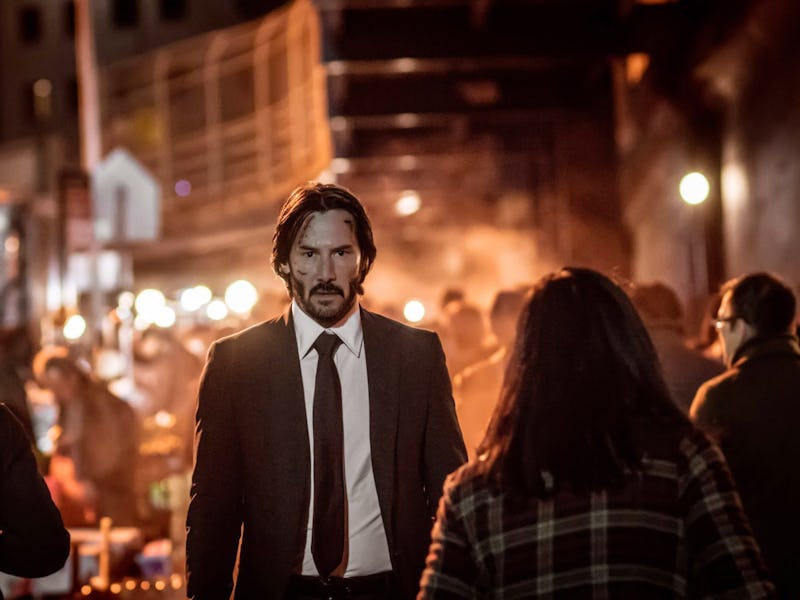The Most Shadowy, Crucial Part of 'John Wick 2'
“We know who they are, where they are, and we kind of know how they're all going to intersect at a certain point in the story.”

The driving motivation of the titular antihero in the original John Wick is simple: avenging the murder of his beloved dog. When screenwriter Derek Kolstad was tasked with upping the ante for the sequel, he couldn’t just return to the death of a domesticated animal companion. Instead, he filled in the mythology and themes of the sequel with Game of Thrones-level explorations of power, greed, and betrayal. To do that he created the High Table, which is the central authority for assassins.
“The High Table was something that came about from discussions between [director] Chad [Stahelski] and I about alluding to the John Wick onion,” he said. “We had a firm foundation beneath us in the first movie, and in the sequel we needed to build over that world and peel back the layers.”
It gives the movie an intentionally grander, more serious scale. Like its predecessor, Chapter 2 merely hints at the ramifications of the assassin hierarchy but doesn’t reveal all of its secrets.
We first hear about the High Table during the inciting incident of Chapter 2. After Wick settles his grievances with the Tarasov crime family (the key conflict in the first film), he attempts to retire to a life away from the organized crime game. Then he gets a knock at the door of his suburban abode. Facing him is Santino D’Antonio, a prominent member of a wealthy crime family, whose sister Gianna has just ascended to a seat at the High Table. That’s when we find out that the shadowy organization is the biggest and baddest council of high-level crime lords on Earth. What should be a moment of pride turns into a moment of action for Santino: He wants Wick to kill Gianna so he can usurp her seat at the High Table. He’s not a good brother.
The concept emerged out of Kolstad’s appreciation of his favorite genre films that he applied to the first John Wick film. “Those movies always have what I like to call the ‘good, bad, and worse,’” he said. “Winston [Ian McShane] sort of represents the bad even though we love him, and John is the good even though he’s in a moral gray area. We always wanted the idea to be that there was the ‘worse’ entity out there somewhere.”
Hence: the High Table.
“In one of the early script drafts we went in-depth on what the High Table is until we realized it was too much for one story,” he explained. “The last thing we wanted to do was have a scene with a bunch of people around a table talking. John is a pawn on their big assassin’s chess board, but he’s more powerful than just a pawn. That opened up the world of storytelling that we could continue to tell down the line, but Chapter 2 always had to be John’s journey.”
So instead of rolling out an elaborate way to dump exposition on the audience to show the ins and outs of the High Table and its members, Kolstad dialed nearly everything back to intentionally keep it mysterious. “You hear very little about the High Table on purpose, but they’re supposed to cast a long shadow over everything,” he said. “What we want to do in the future is to really delve into that world and show it as it is.”
But what would that world look like? How many members are there? Where do they convene? Who is at the head of the table? “We know all of that stuff,” Kolstad said, though wouldn’t divulge any specific secrets. “We know who they are, where they are, and we kind of know how they’re all going to intersect at a certain point in the story,” he said. “But that’s a discussion for when we have a better sense of where the John Wick franchise goes next.”